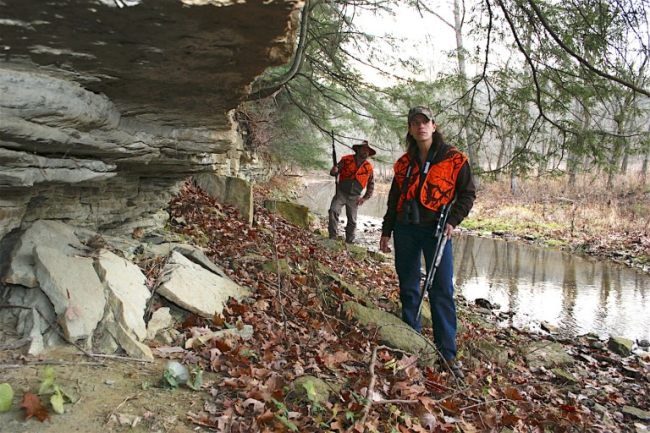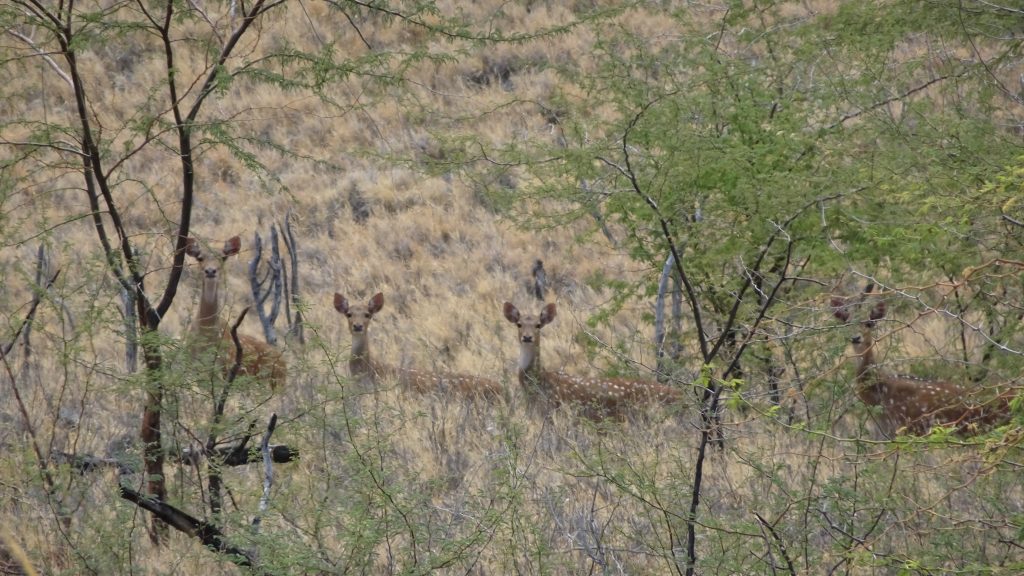I started hunting whitetail deer in 1966 by moving through the woods, hunting for them. Fifty years later, I’m still still-hunting.
Still-hunting is the ancient technique of actively seeking prey. It is practiced by mountain lions, bobcats, coyotes, bears, wolves and humans. Well, a few humans. Not many anymore. During the past 40 years this ancient art of still-hunting (searching, seeking and looking slowly and cautiously) has taken a distant backseat to hiding in ambush. Treestands. Box blinds. Stand hunters don’t hunt so much as hide and wait for something to happen.
Still-hunters prefer to make something happen.
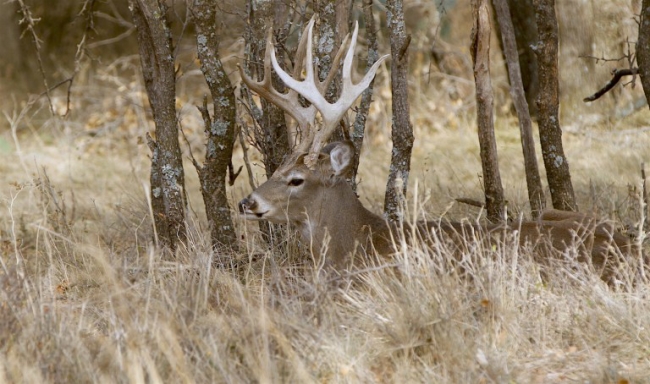
Deer spend at least as much time bedded, chewing cud, as they do foraging.
There’s nothing wrong with ambushing. Northern pike, snapping turtles and spiders ambush. If you have plenty of time and patience, ambushing really works. But still-hunting works better. If you do it right.
Several years ago I conducted a little survey. I was in a hunting camp in a forested Southeast state where every other hunter was sitting. I still-hunted, tallied my buck sightings and compared them to what stand hunters had seen. I saw and had good shot opportunities at more bucks—sometimes twice as many—than did every stand hunter every day.
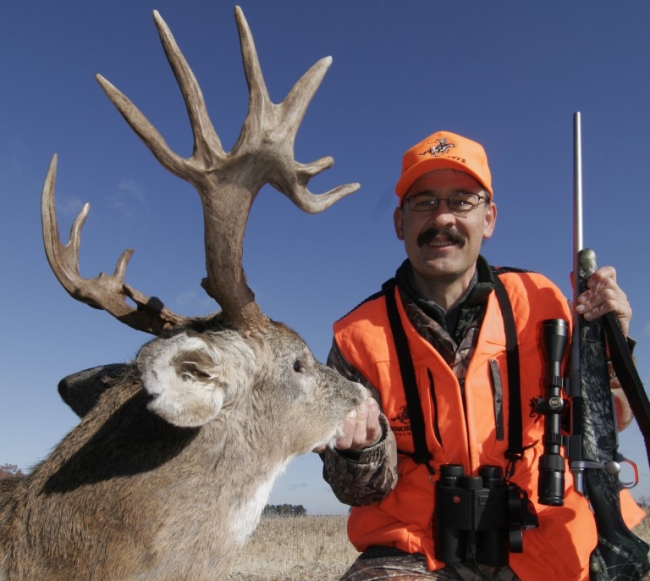
This massive non-typical Arkansas buck fell to an A-Bolt in .300 WSM after several days of careful still-hunting.
This wasn’t because I’m the world’s greatest still-hunter. It was because I was covering more ground while they were stuck viewing small areas. Think about it: How do whitetails spend their days? They forage for one to four hours (takes them that long to fill up, depending on how abundant forage is), then lie down (bed) to ruminate (chew their cud).
We tend to dismiss this cud-chewing business, but it’s a huge part of whitetail behavior. They must regurgitate and masticate (chew) vegetation they snapped up during their hours of feeding. This rumination, too, takes several hours. And the deer aren’t moving during those hours. And neither are the stand sitters. But still-hunters are.
Advantage, still-hunter.
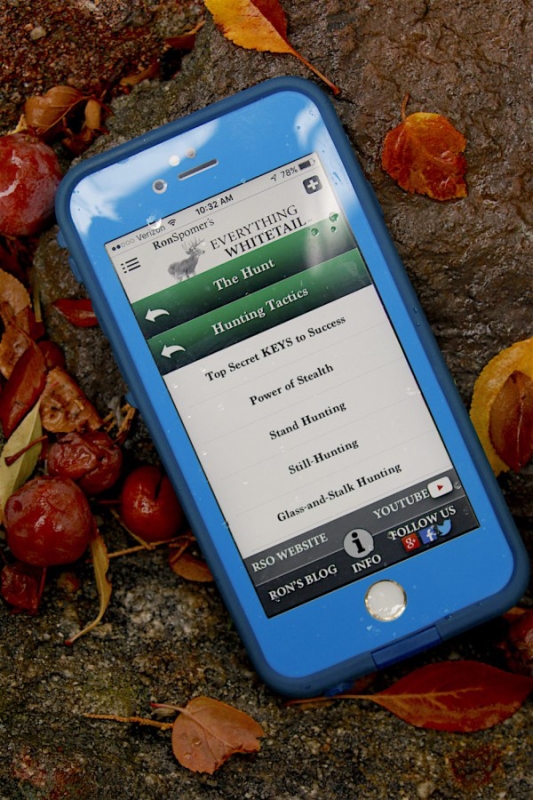
Still-hunting tactics are detailed in the author’s phone app, Ron Spomer’s Everything Whitetail.
Even when deer are active, they animate a tiny slice of the world for a tiny slice of time. Unless you’re watching a concentrated feeding site, commuting deer may zip in and out of your circle of impact in mere seconds. They pass by en route to breakfast, dine out of sight for hours, saunter back en route to bed, and are again out of sight for hours. And you sit there, bored, deerless, for hours. How fun.
The major exception to this lonesome boredom comes during the early rut when bucks are searching for action. They eat and ruminate, but hurriedly because they’re being driven by another biological imperative: mating. In their hormone-driven mania to find receptive does, bucks prowl woods and fields nearly all day. Sit a stand over a heavily used travel corridor and you could get a lot of action. But so can still-hunters.
While I still-hunt my way through the rut, bucks not only appear in front of me, but approach from behind. I’ve had them walk within bow range either oblivious to my orange-clad bulk or curious as to what I am. A tree stump? An ugly doe, perhaps?
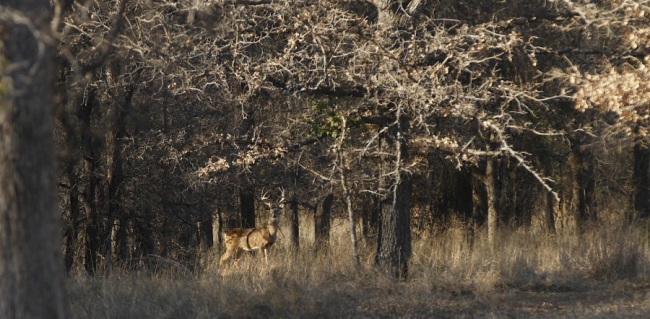
This is the kind of scene still-hunters often see–several times a day.
The key to success in still-hunting is scent control and motion control. Noise isn’t a huge issue, although dry leaves can give you fits. But plenty of woodland creatures rattle foliage. Squirrels, turkeys, armadillos, hogs . . . Move like they do in fits and stops and you blend in. Such minimal movement is a natural part of being mostly still as you hunt, which is why they call this still-hunting. It’s an apt, even cool descriptor.
The hunter is moving, searching for his quarry, but is motionless for most of the time. He watches, scans, glasses (binoculars are a huge advantage), and looks thoroughly before moving into or across the wind to open new avenues. He spots white legs, horizontal backs, flicking ears, white antlers, shiny black eyes.
See them before they see you, find the opening, shoot.
There are many small tricks and details that improve still-hunting, and these tactics are covered in-depth in our phone app, Everything Whitetail, under “The Hunt” tab, then “Hunting Tactics” for all the secrets.
Still-hunting isn’t for everyone, but it is for anyone who enjoys prowling, discovering new coverts and thickets, new bedding sites and feeding spots, new rubs and scrapes, more and bigger deer. You stay active, stay warmer, remain alert and stimulated, and become a better woodsman. Would you rather hunt like a lion or a snapping turtle? Learn to still-hunt and decades from now you’ll be still-hunting still.
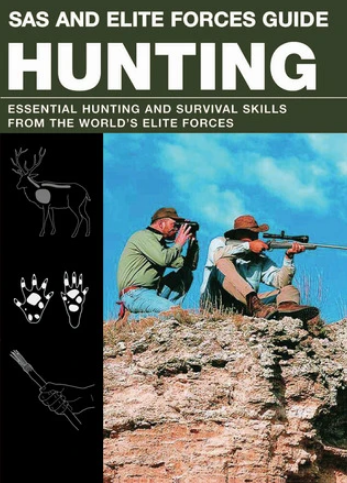 Elite Forces Handbook of Hunting and Shooting demonstrates the core skills involved in being a self-reliant hunter. Includes detailed illustrations from tracking large game to shooting wild pheasant, this book is the essential guide to finding, killing and surviving off animals in the wild.
Elite Forces Handbook of Hunting and Shooting demonstrates the core skills involved in being a self-reliant hunter. Includes detailed illustrations from tracking large game to shooting wild pheasant, this book is the essential guide to finding, killing and surviving off animals in the wild.
Chapters Include: Using Spears and Slings, Hunting With Rifles, Tracking, Preparing Hides, Traps and Snares, Hunting With Dogs, Hunting Land Animals, Hunting in Different Terrains, Preparing a Kill, Wilderness Cooking and more! Buy Now

